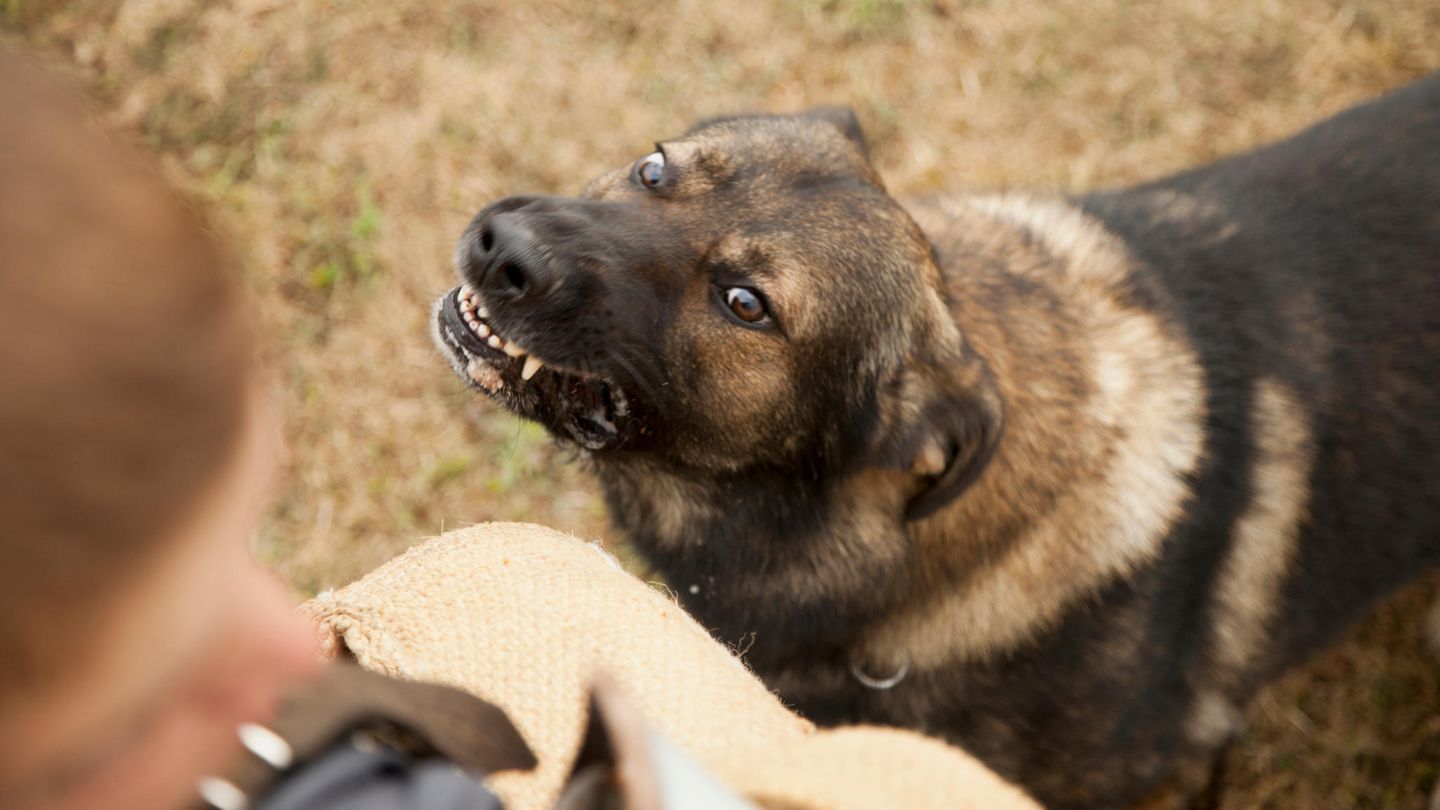Pets at risk
Suddenly confused and aggressive: recognizing “werewolf syndrome” in dogs
Copy the current link
In Europe, cases of dogs suddenly behaving aggressively are increasing. The cause could be contaminated chewing bones. How to react if your pet is affected.
If your dog suddenly behaves aggressively towards its owner, no longer recognizes them, appears frightened or confused, it is a shock for the owner. Since the end of August 2024, more and more dogs in Europe have been showing this sudden and drastic change in behavior. Veterinarians suspect poisoning is behind the phenomenon, as reported by (RND) – but the cause has not yet been found. The Veterinary University in Hanover is currently investigating the so-called “werewolf syndrome”. Contaminated cattle skin bones are suspected.
What symptoms do the dogs show?
- Panic attacks
- Fear (crying, shaking)
- epileptic seizures
- Escape behavior
- aggressive behavior
Dogs with “werewolf syndrome” exhibit fearful, panicked behavior that manifests itself through howling, barking, growling, and random movements. Another typical feature of the syndrome is that the animals try to escape. Some dogs also exhibit aggressive behavior. Nina Meyerhoff, a veterinarian in neurology at Hannover University, tells the RND that there is also evidence that the dogs suffered from hallucinations. Some animals even suffer epileptic seizures.
Important: “Werewolf syndrome” differs from other neurological diseases such as anxiety disorders in its sudden onset. The Hannover Veterinary University shared a video on its Instagram account with two affected dogs who are completely frightened and cannot be calmed down. If you observe a similar change in behavior in your dog without there being any reason for it, it is reasonable to suspect that he could be affected by “werewolf syndrome”.
View this post on InstagramA post shared by Hannover Veterinary University Foundation (@tiho_hannover)
At this point, our editorial team has integrated content from Instagram.
Due to your privacy settings, this content has not been loaded to protect your privacy.
How do I behave if my dog is affected?
For affected dog owners, the suffering of their animal is difficult to bear. Despite the emotional strain on owners and owners, Meyerhoff says it is important to pay attention to your own safety because the animals behaved completely differently than usual. This is sometimes because the dogs no longer seem to recognize their owners. You should therefore keep your dog away from other people, especially children. The first point of contact for those affected is a . After all, according to Meyerhoff, most dogs can be helped. Doctors usually treat the symptoms with sedatives to relieve the animals’ anxiety or with anticonvulsants if the dogs suffer from epileptic seizures. According to the veterinarian, most of the animals were not in mortal danger. The symptoms lasted from several days to weeks.
“Werewolf syndrome”: theories about the cause
What triggers the dogs’ behavior change is not yet clear. However, the evidence points to poisoning. According to Meyerhoff, the suspicion is obvious because treated dogs suffered from the symptoms again shortly after their recovery. It is currently unclear what caused the poisoning, as the search for the cause is complex due to many different tests. Contaminated feed such as cattle bones or other chewing bones are suspected. Evidence for this can be derived from other European countries.
“Werewolf syndrome” also occurs in Finland, Belgium, the Netherlands and Switzerland. Pet food producer Vafo recalled some of its products in Finland last summer that were made in China and suspected of causing the symptoms. These were chewing bones and chewing sticks, which are not on the market in Germany. According to Meyerhoff, cases fell after the recall.
But the spook doesn’t end there, because according to the doctor, cases of “werewolf syndrome” are currently increasing again in Finland. Vafo products are suspected again, but this time other treats. The fact that several countries in Europe are affected by the phenomenon could be due to the fact that different pet food manufacturers may use the same production facilities.
Doctors have so far ruled out ectoparasitics, i.e. drugs that are administered to combat parasites, as well as vaccinations, as the cause. Although they can cause similar symptoms, according to Meyerhoff there is no temporal connection between vaccination and symptoms.
How to protect your animal
Most pet food manufacturers are silent about where the food is produced, making it difficult for owners to protect their pets. Meyerhoff recommends not giving dogs chewing bones for the time being. It is not known how many animals are affected by “werewolf syndrome”.
Source: Stern
I’m Caroline, a journalist and author for 24 Hours Worlds. I specialize in health-related news and stories, bringing real-world impact to readers across the globe. With my experience in journalism and writing in both print and online formats, I strive to provide reliable information that resonates with audiences from all walks of life.




